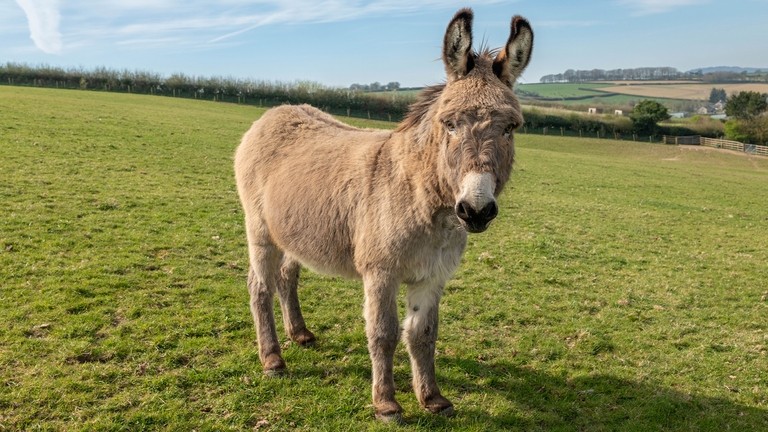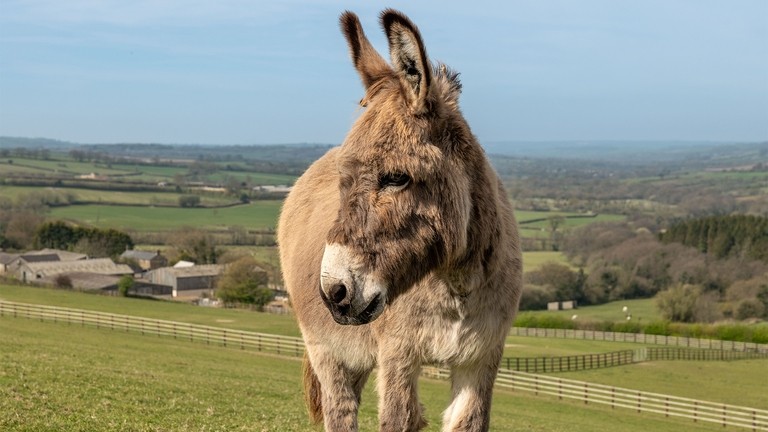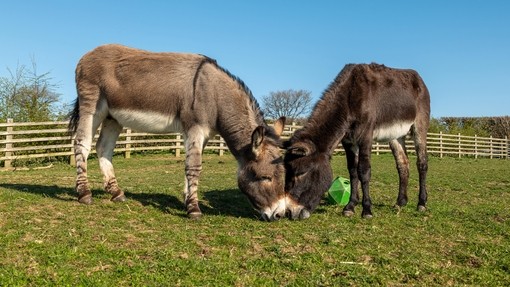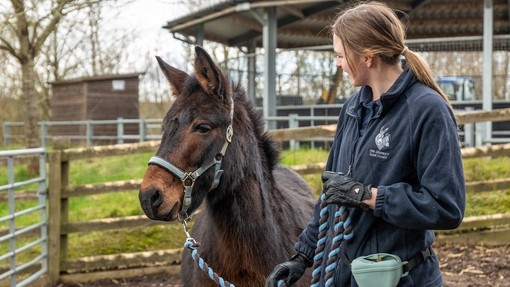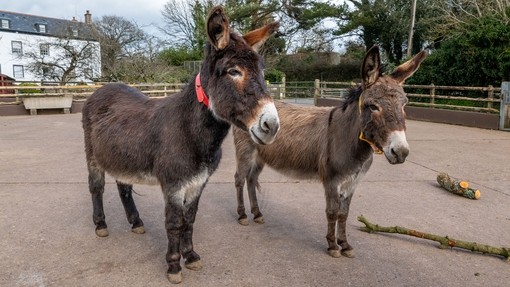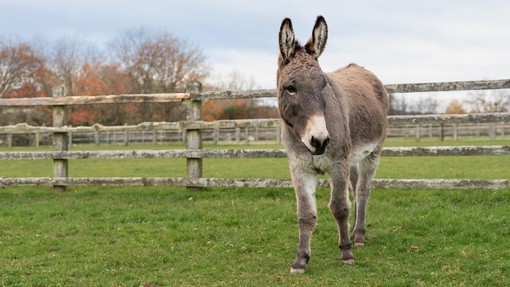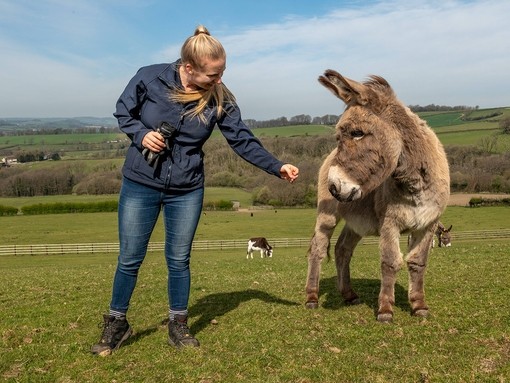
Shaping a donkey's behaviour
Fifteen-year-old Samson, who arrived The Donkey Sanctuary in 2022 alongside three other nervous donkeys, immediately stood out due to his distrust of people.
Our New Arrivals Unit team at our Sidmouth sanctuary, observed Samson’s ears flatten and muzzle tense up whenever they stepped within a certain distance of him.
Samson’s fearfulness truly rose to surface when they attempted to approach; he would walk away to keep distance between them and himself.
His situation was brought to the attention of our Equine Behaviourist Kerry Layton-Hill, who spent several months working closely with Samson to address his confidence issues.
Kerry says: “When I first saw the group of donkeys, what I noticed most was how Samson was watching me with worried eyes; he looked really fearful and was stood quietly in the background.
“The other three donkeys were also quite nervous, but did allow me to approach and give them a scratch.
“However, Samson did not – he had clear boundaries of how I could get to him before he became uncomfortable. I judged this to be about four metres on any one side.”
For the next three months, Kerry worked closely with Samson on regular basis, introducing negative reinforcement methods to help give him control of the interactions.
Originally, when Kerry encroached within Samson’s four-metre ‘comfort zone’ – which is known as introducing ‘pressure’ – he walked away because he was fearful.
However, when Samson stood still in an identical situation, Kerry walked away. This taught Samson that by standing still, he had the power to remove the pressure.
Negative reinforcement is commonly used to help give control to donkeys that are nervous or fearful. It also teaches donkeys to adjust to a variety of situations where physical touch is a necessity, such as loading and unloading, fitting of head collars or even leading.
By the end of March 2023, Kerry’s behaviour training had helped Samson to trust people again.
He soon made the move to Axnoller Farm in Dorset, where present day he resides alongside the donkeys he arrived at The Donkey Sanctuary with.
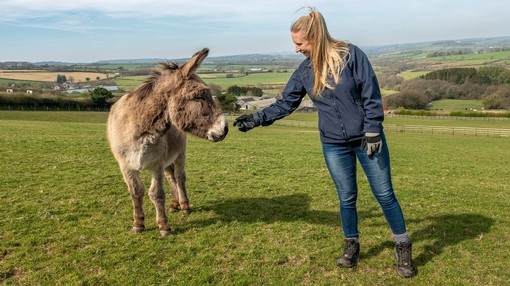
Kerry says: “Samson is a completely different donkey. He actively seeks out his grooms when they enter the barn and demands attention. He just loves people.
“I’m proud of him – he has basically improved his own quality of life by showing initial willingness and motivation to engage with us.
“We were strangers to Samson on day one, but by the end of the process we had built such a good relationship with him.
“It’s this foundation of trust and understanding that has given Samson the platform to socially thrive at Axnoller.”
Negative reinforcement in behaviour training
Negative reinforcement is a scientific method of learning that involves the removal of something negative to increase a behaviour. When Samson stood still, Kerry stepped back out of his four-metre ‘comfort zone’, teaching him that standing still was a good way to control Kerry’s behaviour.
Once Samson became comfortable with Kerry approaching, she administered positive reinforcement in the form of scratches. The scientific method of positive reinforcement involves the addition of something positive to increase a behaviour.
Positive reinforcement would not have worked in the beginning of Samson’s behavioural journey, as he was too fearful for Kerry to approach, let alone touch him.
Kerry says: “Negative reinforcement made us predictable and gave Samson choice. He could choose to walk away or stand still when we approached, which allowed him to have control of the interaction. Being given this sense of agency built up Samson’s confidence, as he dictated how every interaction went depending on his level of fear or comfort.”
Help support more donkeys like Samson
Share this page
Tags
- News

